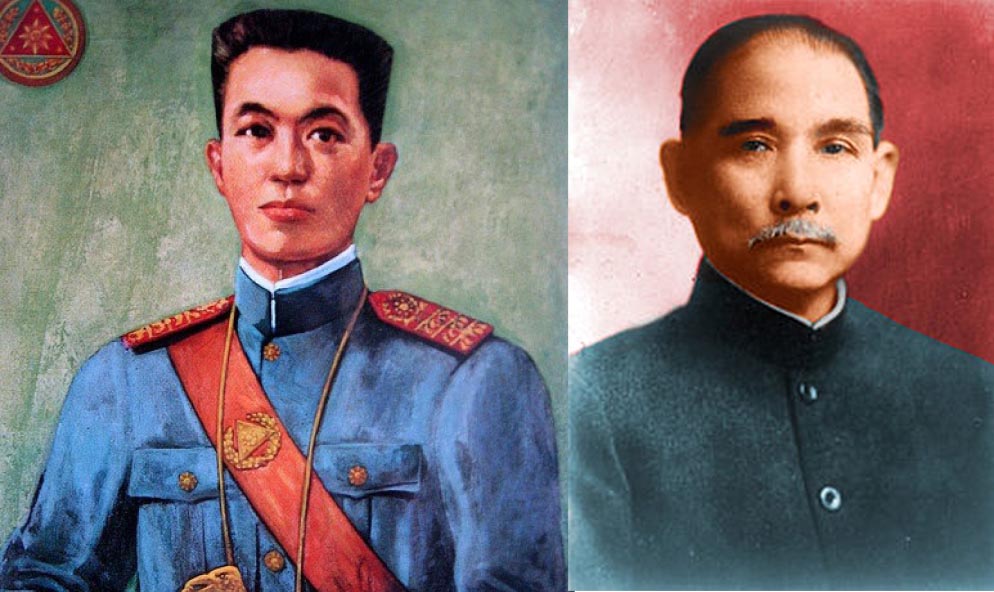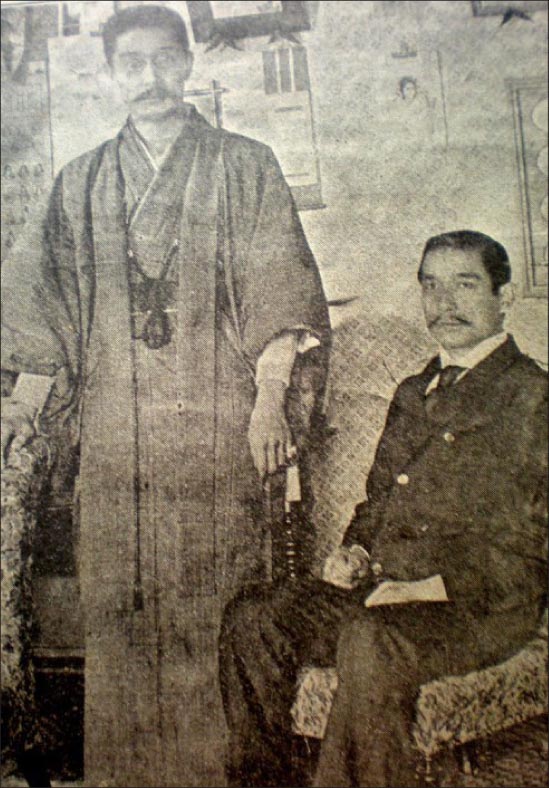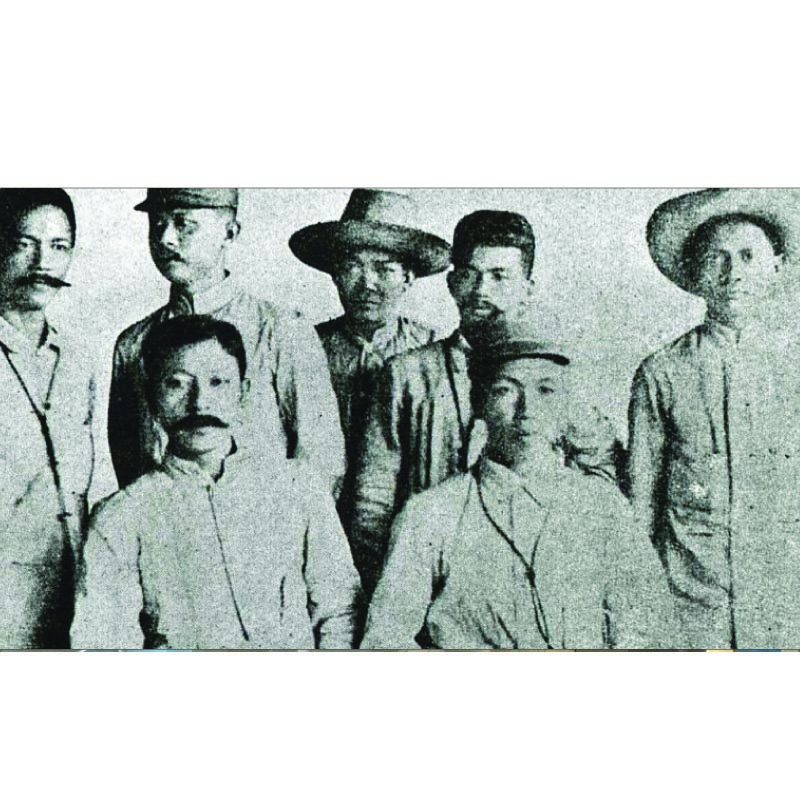
In the Philippine struggle for independence from the Spanish overlords, and later from the American colonists, the Chinese were always in the picture.
Across the sea, China’s reformists were inspired by Filipino revolutionaries who fought not one, but two, Western powers. Contacts were made between China’s leader of its revolution Dr. Sun Yat-sen and his Filipino counterpart Gen. Emilio Aguinaldo, promising mutual aid and support.
Within the Philippines, compatriots of Chinese descent joined hands with Filipinos in defying Spanish rule and American aggression, supplying manpower, cash and goods to sustain Aguinaldo’s army.
This Tulay article is a summary of a longer paper, “Shared History, Shared Destiny: The ethnic Chinese, China revolutionists and the Philippine revolution.” It was presented at the international conference on the 150th Birth Anniversary of Emilio Aguinaldo held at the Lyceum of the Philippines University in General Trias, Cavite on March 19-21 to commemorate the Father of the Philippine Republic’s life and deeds.
Filipinos and Chinese were among the earliest peoples in Asia to aspire for freedom: while Philippine revolutionists struggled to unshackle our nation from colonial rule in the late 19th century, the Chinese likewise struggled to unshackle theirs from the ravages of imperial dynastic rule during the same period.
Vignettes from Philippine and Chinese sources highlight this period of shared historical ties that bound two peoples in their struggles for the common cause of freedom from colonial and imperial rule.
The fervor of the reform movements of Liang Qi Chao and Kang Yu Wei, followed by the frenzy of the revolution led by Sun Yat-sen had significant impact, especially on Southeast Asia, including the Philippines. The ideals of independence from colonial rule were planted by reformists and revolutionists and gained support from the Chinese overseas, wherever they were.
Financial and logistical support for Sun Yat-sen and the revolution gathered momentum, especially in Southeast Asia.
On the other hand, Chinese revolutionists looked up to and were inspired by the Filipino revolutionists whom they lauded for daring to fight two white foreign colonialists.
Chinese contributions
From the voluminous archival materials on the Philippine revolution, ethnic Chinese contributions to the Philippine revolution include direct participation, financial assistance, and procurement or provision of material resources needed by the revolutionaries.
Direct participation. The list of Chinese who directly participated in the Philippine revolution more than 100 years ago and stood shoulder to shoulder with other revolutionists included more than just Gen. Jose Ignacio Paua, the only pure-blooded Chinese general in Aguinaldo’s army.

There was also another unidentified Chinese who served as Paua’s assistant when he built the arsenal and foundry in Imus, Cavite.
Likewise, “General Jose Paua’s biography,” an article written by Shi Gong which appeared under the biographies section of Singapore Nan-An Village Associations’ 1977 journal, mentioned there were 3,000 Chinese revolutionists recruited and led by Paua.
Aguinaldo himself said the Chinese who supported the Philippine revolution were many and those who directly joined the ranks of soldiers were also numerous. Filipino revolutionists considered the Chinese as allies in the common fight for freedom.
One of the 13 martyrs of Cavite was Francisco Osorio, son of a prominent Chinese merchant. Historian Rafael Guerrero noted: “Calmly, Chino Osorio did not weep even up to his execution.”
Various sources considered Francisco a Chinese mestizo, most cited his father as pure Chinese. Since both his sons actively participated in the revolution, it is not farfetched to surmise that the Osorio patriarch himself might have been a direct supporter or sympathizer, especially when we consider the fact that Francisco was accused of buying 250 guns and concealing them in his house.
Philippine Revolutionary Records (PRR)mentioned the list of Filipino revolutionists implicated or captured by the Spaniards, which includes 160 names of Binondo residents (like Gregorio Sy Quia, father-in-law of the late President Elpidio Quirino); the organization of a regiment in Binondo; ammunitions discovered in the Binondo cemetery; police discovered in inconspicuous and inaccessible back rooms of small native and Chinese shops bolos being made and insurgent uniforms manufactured.
Financial assistance. Chinese financial contributions to the Philippine revolution were largely solicited by Paua. Meticulous records of the contributors and the amounts reflect the big contributions brought in by the Chinese.
This includes the Chinese in Nueva Caceres (part of Naga City today) who bought P100,000 worth of public bonds; the Chinese in Albay and Camarines who contributed P44,790. In addition, Paua reported to Aguinaldo that he had personally solicited for the revolutionary coffers P220,000 in Southern Luzon.
The PRR reported that Paua delivered to the national treasury a staggering 400,000 Mexican dollars, the largest cash sum ever collected by an authorized agent of the Philippine Republic, the main source of the contribution of which came from the rich mestizos and Chinese merchants.
John Taylor’s Philippine Insurrection pointed out that voluntary contributions from a number of provinces show that the Chinese contributions were twice as that given by anybody else in the town.
Moreover, in the list of those who gave monthly contributions to the revolutionary coffers were unmistakable Chinese names: Tan-Cao, Tao-Chien, Loa Tico, Tan Dianco, Loa-Siengco, Yu-Dongco, Lao-Chichon. Other Chinese-sounding names in the list were Angguico, Guison, Guason, Quionson, who may be pure Chinese or at the very least, mestizos.
Material resources: Supplying materials needed by the revolutionists appeared to be the more prevalent form of assistance given by the Chinese.
For instance, General Santiago Alvarez, in his work on the Katipunan, recounted that on Aug. 26, 1896, after Bonifacio signaled the start of the revolution in Balintawak, the Katipuneros moved to Mandaluyong, where two Chinese-owned stores gave them “two packets of La Insular cigarettes, two boxes of matches, five cans sardines, and P5 in cash.”
The PRR mentioned that the Chinese supplying material resources were recorded in many places including Angeles, Malolos, Tayug in Pangasinan, Catmon in Cebu, Ilocos, Vigan, San Fernando in Pampanga, Samar, Iloilo, Masbate, Iba in Zambales, Tarlac, Apalit in Pampanga, La Union, Calumpit in Bulacan.
Aside from cash contributions and other donations, supplies provided included rice, oil, salt, dried pork, carabaos, and other food. They also helped solicit gunpowder, matches, pen and paper, clothing and hats, and medicine.
There were also Chinese who helped transport the goods of the revolutionaries. In fact, some Chinese were even sent by Antonio Luna to cut dried leather and bake galletas for the revolutionary army.
Revolutionists were also supplied with falsified stamps and seals of the Spanish government to enable them to travel.
The Chinese and the Filipino-American war
The book Republic or Empire: American Resistance to the Philippine War by Daniel Schirmer, revealed that William McKinley’s final decision to colonize the Philippines was actually motivated by America’s ambition to conquer China, to use the Philippines as jumping board to penetrate the great supermarket that is China, invade its territory, and eventually conquer China.
This illustrates even more clearly how closely intertwined are the destinies of the Philippines and China. The Philippines and China shared common fates, fought common enemies, and aspired for common development goals and were in fact “tied together in one umbilical cord,” to use a Filipino expression.
Tulay Dec. 4-17, 2018 issue reported how the bronze Balangiga church bells – looted by American soldiers in 1901 and finally returned to the Philippines in December 2018 – are reminders of an interesting vignette in the intertwining destinies of the Filipinos and the Chinese.
The Balangigans and the Chinese in Beijing crossed paths in this historical event: American soldiers had wantonly pillaged and murdered innocent Chinese civilians when they – and troops from other Western powers – put down the Boxer Uprising in China.
Afterward, the same soldiers had gone to Eastern Samar to raze the town, rape and massacre its people, in retaliation for the killing of 48 of the 74 men in the Ninth Infantry by Filipino fighters and guerrillas.
By killing the American soldiers, the Balangigans had unwittingly avenged the deaths of the Chinese. Most importantly, there is the tantalizing possibility of how the Filipino revolutionists could have won the war against the Americans (just as they won the war against Spain), had the United States pulled out a bigger contingent of soldiers from the Philippines to send to China to quell the Boxer Rebellion.
Emilio Aguinaldo and Sun Yat-sen
The lives of the leaders of the revolutionary movements in the Philippines and China – Aguinaldo and Sun, respectively – touched one another in many ways.
There were close ties between these two, both of whom were Asian, suffered from persecution, abuses, and the imperialist ambitions of colonizers, mutually supported and empathized with one another’s fate, and shared a common destiny.
When Sun was defeated in his second uprising against the Manchus, he lost many of his supporters and was quite discouraged. It was Aguinaldo, as head of the Philippine revolutionary government, who gave Sun 100,000 Japanese yen for his expenses. It was a very crucial gesture, considered by Sun and his supporters as “sending coal in freezing winter.”
In June 1898, Philippine representative to Japan Mariano Ponce met Sun in Yokohama and asked him to help the Philippine revolutionists acquire military arms. Sun agreed and helped procure two shipments of arms.

But the first shipment in the vessel Nonubiki Maru hit reefs off Zhejiang province and sank in July 1899. The second procurement, in January 1900, likewise failed: the interventions by the governments of Japan and the US prevented the shipment from leaving Japan.
Meanwhile, in an agreement with Ponce, Sun would send members of his revolutionary party to the Philippines to help fight against the American invading army. After the Philippines won its independence, the Philippines would help China in its own struggle.
When the Philippine revolution failed, Sun changed his strategy and concentrated on winning China’s own struggle for independence so that they could help the Philippines achieve hers later.
“There’s no first or last in this big struggle,” Sun said. “Our party decided to establish its revolutionary army and pursue its own task. When we succeed in our objective, then we can also look into the cause of Philippine independence.”
In Yokohama, Ponce actually stayed near the house of Sun, who lived there with his wife and only son. The house was situated in a district totally occupied by Japanese, outside of the Bund (which was) a residence of foreigners. They frequently had dinner together, often with another revolutionist, Galiciano Apacible, thus highlighting how closely connected Filipino and Chinese revolutionists were.
Inspiration to the Chinese
Aside from mutual help in terms of resources and finance, the Philippine revolution against Spain and America inspired Chinese revolutionists immensely.
Liang Qi Chao, one of the famous leaders and key movers of the self-renewal movement (sometimes also known as the Reform or Renaissance Movement) in China, wrote warm praises for the Filipinos who “struggled with the white men twice without losing hope in their defeats.”
He ended with how he would prostrate himself to kowtow to the “Filipinos who put fear in the hearts of the white race.”
High tribute indeed from a Chinese reformist who envied the Filipinos for their courage in battling two big powers.
Liang was among the first to translate Rizal’s “Mi Ultimo Adios” to Chinese.
Another reformist, Au Ji Jia, wrote that “China is big but is afraid of the small while the Philippines is small but fighting the big. The fighting spirits of these two peoples are as disparate as heaven and earth. The people of our country must therefore not despair, (and) quickly follow the Philippines to achieve victory.”
The author earnestly exhorted the Chinese people to use the Filipinos as a model in struggling for independence and freedom. The Chinese revolutionists expressed a common admiration for the Filipinos’ resilience and strong spirit to fight.
Conclusion
For four centuries, the Spaniards, British, Americans, Japanese unfurled imperialist ambitions to conquer our country. The Chinese, who came to Philippine shores looking only for a chance to better their lives, suffered as the Filipinos suffered, under colonial rule.
More than 100 years ago, in our country’s struggles against three centuries of Spanish colonialism, oppression, and abuses, the Chinese, together with their Filipino brothers, gave their strength, suffered together, and poured their blood for the revolutionary cause.
Indeed, infused into the red color of bravery in the Philippine flag are drops of ethnic Chinese blood.





